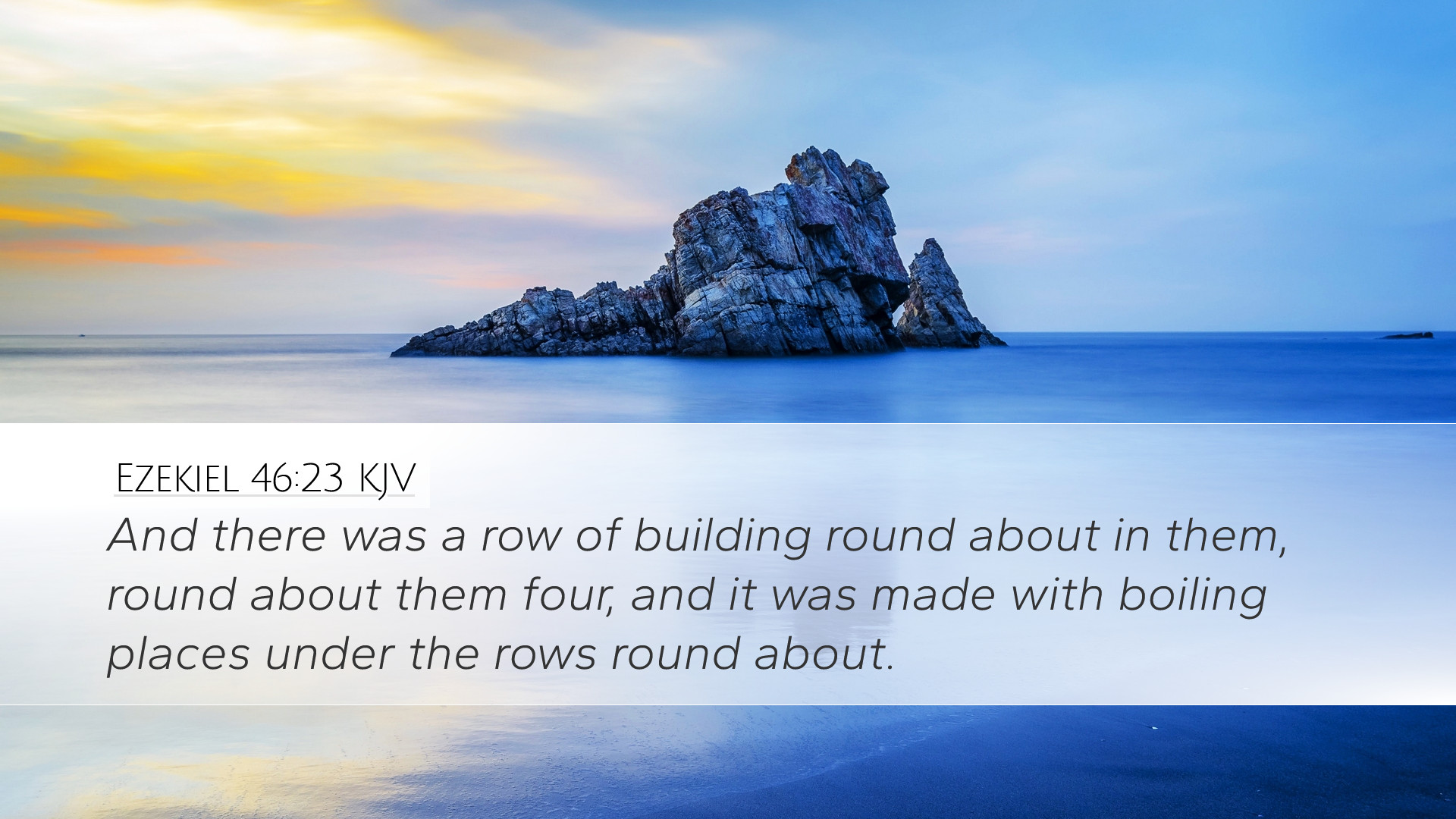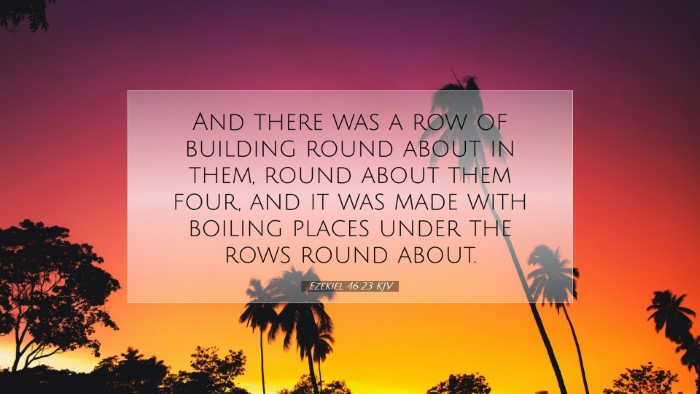Ezekiel 46:23 Commentary
Verse (Ezekiel 46:23): "And there was a wall round about the court; and the length of the measuring reed was five cubits. The breadth of the court was four cubits; and the length of the house was also five cubits." (Ezekiel 46:23, KJV)
Introduction
This passage from the book of Ezekiel is part of a larger discourse concerning the vision of the temple and its services. Ezekiel's prophecies are rich with imagery and detailed descriptions that relate to the holiness of God, proper worship, and the structure of the future temple. The specific verses often serve as a blueprint for understanding not only the physical dimensions of the temple but also the spiritual significance behind these designs.
Matthew Henry's Perspective
Matthew Henry emphasizes the significance of the details provided in the measurements and layouts described by Ezekiel. In his view, these details reflect God’s order and precision in His plans for worship. Henry notes that the court mentioned serves not only as a physical barrier but also as a spiritual one, marking the space where God meets His people.
- Spiritual Boundaries: The wall symbolizes the separation between the sacred and the common, illustrating God’s desire for holiness.
- God’s Presence: The measurements highlight that God is a God of order, and worship should reflect that order.
Albert Barnes' Insights
Albert Barnes provides a detailed interpretation of the text, focusing on the implications of the design of the temple structure. He asserts that such precise architecture serves multiple purposes:
- Symbol of Divine Design: To show that God’s worship is carefully constructed, both literally and figuratively.
- A Lesson for Contemporary Worship: For pastors and leaders today, Barnes encourages the notion that worship spaces should be thoughtfully planned to reflect God's holiness.
Barnes also points out that the mention of the wall emphasizes the importance of maintaining boundaries in worship practices, paralleling how boundaries arise in our spiritual lives for protection against the encroachment of secularism.
Adam Clarke's Analysis
Adam Clarke expands on the idea of the physical representations found in the temple. He argues that the wall around the court signifies protection and sanctity. Worshippers must approach God with reverence, and the design instills a sense of awe and respect:
- Symbolism of the Wall: Acting as a boundary, it invites believers to recognize the difference between sacred and secular spaces.
- Encouragement for Holiness: Clarke emphasizes that this architectural detail is a call for holiness in the believers’ lives, reminding them to enter God’s presence with a diligent heart.
Furthermore, Clarke highlights the broader implication of these verses: God’s patterned worship reflects His character, and thus, as believers modeled their lives after this divine order, they shape a community of faith that honors Him.
Theological Significance
Combining insights from these commentaries, a deeper theological understanding can be drawn:
- Worship in Spirit and Truth: These verses reinforce the notion that worship should be approached with both reverence and authenticity.
- Holiness and Separation: The wall is not merely a physical structure; it conveys concepts of holiness and separation necessary for truly engaging with God.
- Communal Responsibility: For pastors and leaders, this underscores the responsibility to cultivate environments of worship that honor these spiritual principles.
Application for Today’s Church
The physical dimensions and the careful attention to the sanctuary’s layout invite modern believers to reflect on several key points:
- Design and Intent: Churches today must be designed with a view that prioritizes God’s presence. Every element of a worship space should work to facilitate encounters with the Divine.
- Spiritual Preparation: The separations we see in the text may encourage congregations to prepare themselves spiritually before entering into worship, understanding that this space is set apart for communion with God.
- Expectations from Leaders: Leaders are called to maintain the sanctity of worship and help congregants recognize the sacredness of their gatherings.
Conclusion
The rich imagery and specific details found in Ezekiel 46:23 serve as a powerful reminder of God's desire for intentional worship. As highlighted across the various commentaries, every aspect of the worship experience should point towards God's holiness, instilling a sense of awe and respect in the hearts of believers. The implications are vast, encouraging contemporary Christians to engage thoughtfully with their worship environments and to embrace the boundaries that honor God's presence.


